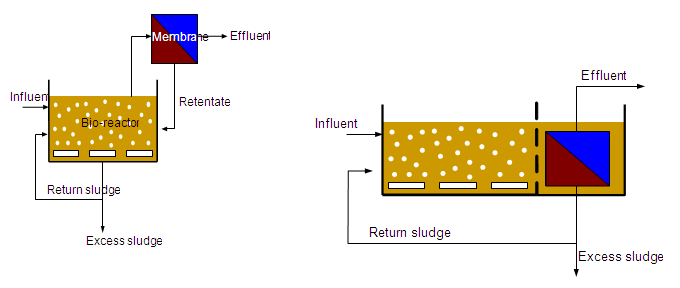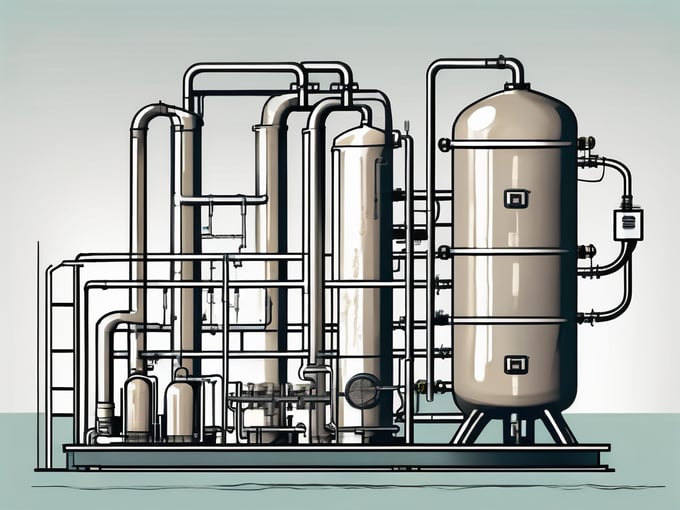The Science Behind Membrane Bioreactor: How It Works and Why It’s Effective
The Science Behind Membrane Bioreactor: How It Works and Why It’s Effective
Blog Article
Just How Membrane Bioreactors Are Reinventing Water Purification Equipments
The appearance of membrane layer bioreactors (MBRs) stands for a considerable innovation in the area of water filtration, combining organic treatment processes with cutting-edge membrane layer filtration modern technologies. As global water shortage increases, the duty of MBRs in helping with safe and clean water reuse and sustainable water monitoring becomes progressively crucial.
Overview of Membrane Layer Bioreactors
Membrane bioreactors (MBRs) stand for a significant development in water filtration modern technology, as they incorporate biological therapy processes with membrane layer filtration. This assimilation improves the efficiency of wastewater therapy by making use of microorganisms to deteriorate natural toxins while at the same time utilizing semi-permeable membrane layers to separate treated water from suspended solids and virus.
The MBR system generally includes an organic reactor where the microbial populace metabolizes impurities, complied with by a membrane filtration device that maintains biomass and permits only clean water to go through. This dual functionality results in higher effluent quality contrasted to traditional treatment techniques. MBRs can be run in both batch and continuous circulation modes, offering adaptability in style and application.
Furthermore, MBRs are defined by their small footprint, making them ideal for city settings with room restraints. Membrane Bioreactor. They additionally enable the healing of water for reuse, thus adding to water sustainability initiatives. While MBR technology has actually gotten appeal in municipal and industrial applications, its operational complexities and energy needs demand mindful factor to consider during application. Overall, MBRs are at the forefront of improving water therapy performance and quality, showcasing the possibility for innovative solutions in environmental management.
Benefits of MBR Modern Technology
The integration of organic treatment with membrane layer filtering supplies countless benefits for water filtration procedures. One of the key advantages of Membrane Bioreactor (MBR) modern technology is its capacity to properly get rid of both organic and not natural pollutants, causing top notch effluent. The membrane layers work as a physical obstacle, avoiding put on hold solids and pathogens from going through, which enhances the total security and reliability of cured water.
Additionally, MBR systems need a smaller sized impact contrasted to conventional treatment methods, enabling more effective room utilization. This small style is especially beneficial in metropolitan settings where land is limited. MBRs additionally show functional adaptability, fitting differing influent qualities and circulation prices without considerable efficiency deterioration.
Furthermore, the process offers boosted nutrient elimination capabilities, specifically for nitrogen and phosphorus, which are essential for stopping eutrophication in getting waters. The reduced sludge manufacturing connected with MBR innovation also translates to decrease disposal expenses, making it a cost-effective option over time - Membrane Bioreactor. On the whole, the advantages of MBR modern technology setting it as a leading selection for sustainable and ingenious water purification systems, resolving both ecological and economic problems
Applications in Water Filtration
Applications of Membrane Layer Bioreactor (MBR) innovation in water filtration are impactful and varied, attending to various treatment needs throughout numerous markets. MBRs effectively integrate organic treatment processes with membrane layer purification, making them perfect for community wastewater therapy, industrial effluent management, and also safe and clean water reuse efforts.
In municipal settings, MBRs are significantly utilized to improve the high quality of treated wastewater, enabling compliance with stringent discharge policies and facilitating the recycling of water for watering and non-potable usages. Their small design also makes them ideal for urban environments where room is limited.
Industrially, MBR modern technology is utilized to treat procedure water and wastewater, especially in industries such as food and beverage, pharmaceuticals, and fabrics. By effectively eliminating impurities and suspended solids, MBRs aid industries lessen ecological influences while recovering important resources from wastewater streams.
Furthermore, MBRs are acquiring traction in decentralized water therapy her response applications, where small-scale systems can be deployed in remote locations or establishing areas. This adaptability enables communities to accomplish lasting water monitoring options, improving accessibility to clean water while minimizing dependence on traditional treatment methods.
Study and Success Stories

In one more example, a fabric manufacturing facility in Bangladesh embraced MBR technology to resolve its wastewater obstacles. The system minimized chemical oxygen need (COD) levels from 1,200 mg/L to less than 100 mg/L, hence meeting regulative standards and substantially lessening environmental impact.
The College of Cape Town's MBR installment has verified effective in dealing with greywater for non-potable reuse on university. This task not only preserves potable water but likewise acts as an instructional model for sustainable methods.
Moreover, a seafood handling plant in Norway used MBR technology to treat effluents containing high degrees of organic matter, achieving over 90% pollutant removal. These situation research studies highlight MBR technology's convenience and its essential duty in improving water high quality across varied applications.
Future of Water Treatment Solutions
As global water deficiency and pollution challenges increase, cutting-edge water treatment remedies click for info are coming to be increasingly vital to make certain lasting accessibility to tidy water. The future of water treatment hinges on the integration of innovative innovations that boost the performance and effectiveness of filtration procedures. Membrane layer bioreactors (MBRs) go to the forefront of this advancement, integrating organic therapy with membrane filtering to generate top quality effluent ideal for various applications.

Arising fads such as resource recovery additional resources from wastewater, including nutrients and energy, will certainly additionally transform treatment facilities right into environment-friendly hubs. Moreover, developments in nanotechnology and membrane materials promise improved performance and long life of purification systems.

Final Thought
Their role in potable water reuse and sustainable water monitoring highlights their importance in dealing with worldwide water scarcity challenges. Proceeded research and development will additionally boost the efficiency and adoption of MBR innovation, making sure a durable future for water treatment services.
The emergence of membrane layer bioreactors (MBRs) stands for a considerable development in the field of water filtration, merging organic therapy processes with advanced membrane filtration innovations. As international water deficiency magnifies, the duty of MBRs in promoting potable water reuse and sustainable water monitoring ends up being increasingly important. They additionally allow the recovery of water for reuse, therefore contributing to water sustainability initiatives.As worldwide water scarcity and air pollution difficulties heighten, innovative water therapy options are becoming significantly crucial to ensure sustainable accessibility to tidy water. Their function in potable water reuse and sustainable water management highlights their significance in resolving international water scarcity challenges.
Report this page